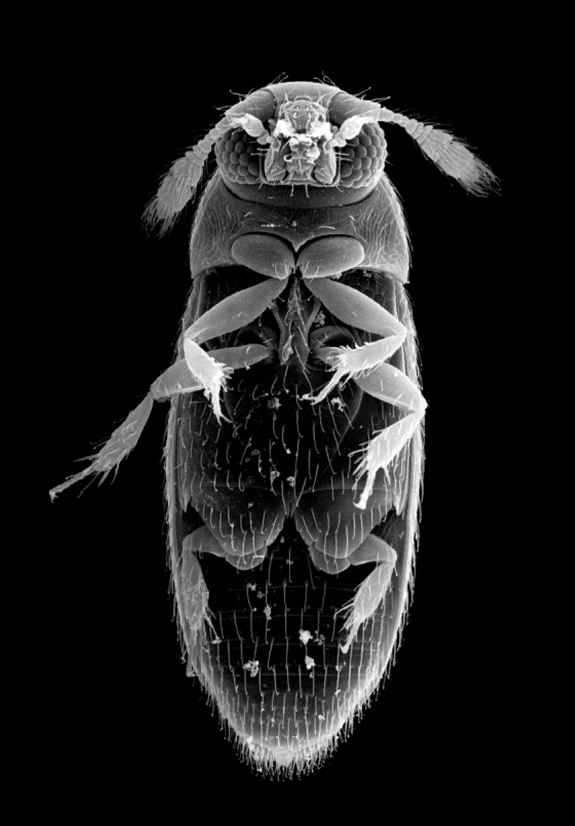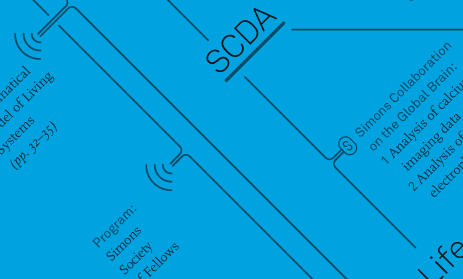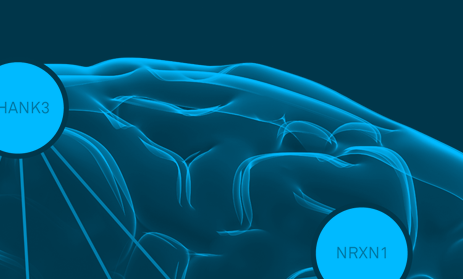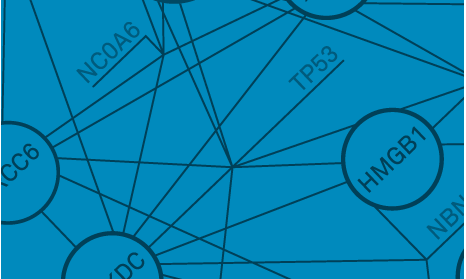Ask computational neuroscientist Dmitri Chklovskii what his research goals are at SCDA, and he doesn’t mince words. “Our goal is to understand how the brain computes,” he says simply. Of course, it’s anything but simple. And for Chklovskii’s neuroscience group at SCDA, the question is doubly complex: Not only do they intend to crack the brain’s computational code by reconstructing the three-dimensional (3-D) ‘wiring diagram’ of its network of neurons, but they also need to invent novel data-processing techniques just to make sense of the deluge of experimental data generated by contemporary brain imaging technology. The current method for mapping neural connections requires collecting millions of extremely high-resolution two-dimensional images, and then “stacking the slices” together so that the 3-D connections are revealed. “Even for a small animal like a fruit fly, the datasets are humongous,” Chklovskii says.

These fully functional mini-insects are so small that researchers can image their entire nervous systems with unprecedented detail. Mini-insects and single-cell organisms are shown at right using a 200-micron scale. (A single human hair is 100 microns in thickness.) Mini-insects above include: Nanosella sp., Amoeba proteus, Paramecium caudatum, Megaphragma mymaripenne and Dicopomorpha echmepterygis. Credit: Alexei Polilov
Prior to joining SCDA, Chklovskii’s group developed software that significantly accelerated the creation of these neuronal wiring diagrams, or connectomes. The neuroscience group intends to assemble a connectome of the entire nervous system of Megaphragma mymaripenne, a microscopic wasp. “It’s only 200 microns long, but it can see, smell, fly and find food with a small number of neurons,” Chklovskii says. “We hope that by reconstructing the complete nervous system of this insect, we can start to understand how it all works together.”
Of course, as Chklovskii says, human beings actually have powerful computers between their ears that can accomplish extremely complex, real-time data analysis. “At any given time, we are bombarded by millions of different signals from the outside world, and we have to react without waiting for the whole dataset, because by that time we would be dead,” he says. Chklovskii believes that our brains are biologically implementing some sort of highly efficient algorithm to process the constant stream of ‘big data’ from our senses. If the insights gained from constructing a connectome reveal how biological brains — even tiny ones like that of Megaphragma mymaripenne — accomplish this feat, they might also shed light on how to design more efficient computers that are capable of analyzing the torrent of real-time streaming data soon expected to come from networked sensors embedded in everything from home appliances to civil infrastructure: the so-called ‘Internet of things.’
Chklovskii acknowledges that both mysteries may not be solved at once, but he predicts significant growth and value in the synergy between neuroscience and computer science — a synergy that needs a multidisciplinary research center like SCDA in order to flourish. “It’s very hard to teach computers to do what humans seem to do effortlessly, and vice versa,” he says. “But we can look for some sort of guidance in the data.”
To assemble a wiring diagram for the brain, Dmitri Chklovskii and his group slice brain tissue into ultrathin slices, image the slices under an electron microscope and trace neuronal connections through micrographs.





